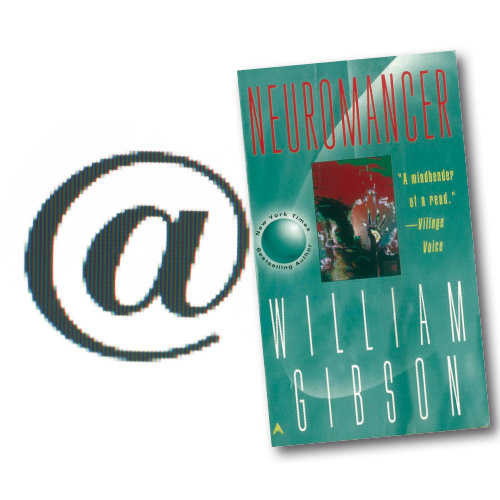Confucius once said, “Study the past if you would divine the future.” And in fewer places is this little adage more apparent than in the realm of technology. Mobile phones, big screen televisions, even the Internet—before any of these became mainstays in our very real lives, they were envisioned in some form or another by science fiction creators. We look back at technology that once existed only in science fiction, which has become reality. Ring Me Up, Scotty
Ring Me Up, Scotty
Then: It was 1966 when the voyages of the Starship Enterprise and its crew first invaded popular culture’s psyche through the cult sci-fi series Star Trek created by the late Gene Rodenberry. The show’s mission: To boldly go where no television series had gone before. Since then, the show has spawned numerous spin-off series and movies featuring memorable alien races like the Vulcans and Klingons. Clearly set waaaaay ahead in the future, Star Trek featured all sorts of cool gadgets and doohickeys—one of which was a rather familiar looking mobile communicator.
Now: Captain Kirk’s groovy little device has evolved into—the modern mobile phone. While you can’t use your phone to order someone to teleport you into a spaceship, you can most certainly take photos, send text messages, surf the Internet, play games and, oh, make calls too—tons of functions that the good Captain didn’t have access to in his funky communicator.
Even Dr. Martin Cooper, inventor of the modern cell phone, has said that he was directly inspired by the Star Trek communicator. Things have come full circle with US phone company Sona producing a Trek phone last year that resembled the original device (sorry, Singaporean Trekkies—it isn’t available here).
Accuracy: ![]()
![]()
![]()
![]()
![]()
 You Speak-a English?
You Speak-a English?
Then: In 1978, the BBC began airing a radio series by writer Douglas Adams’ called The Hitchhiker’s Guide to the Galaxy. For those of you who have managed to get through life so far without having read the book that the series spawned, H2G2 (as it’s commonly referred to) is the story of Arthur Dent, an ordinary Englishman who finds himself whisked off into outer space after the Earth is destroyed to make way for an intergalactic expressway. This novel eventually grew into a series that starred entire races of extra terrestrials, most of whom Arthur communicated with through something called a Babel Fish, an organism translated alien languages into English for him, and which he wore—in his ear.
Now: While we certainly don’t slide strange creatures into our ears in an attempt to talk to other life forms, we do have a Babel Fish of our own—a website by Alta Vista called www.babelfish.altavista.com that provides translations to and from about a dozen major languages. Just type in the text you want translated, select from a drop down menu which language you want your text translated into and click! But, there are absolutely no alien languages in Babel Fish’s options! What’s up with that?
Accuracy: ![]()
![]()
![]()
![]()
![]()
 Blogged It Out
Blogged It Out
Then: The year is 1997 and blogging was barely even in its infancy. It was during this time that writer Warren Ellis and illustrator Darick Robertson created the comic series Transmetropolitan (otherwise known as Transmet), which featured a futuristic society that consisted of an endless supply of mad technology—from gene-splicing body modifications to cameras embedded in sunglasses. One technology that was prominent in the series were feed sites—website-type pages that were maintained by ordinary people and that consisted of everything from a journal of a user’s daily life to current affairs.
Now: Blogs have become the platform by which everybody and his brother reaches an international audience, whether it’s to give his two cents worth or to report from a personal point of view on current events.While Transmet came a little too close to the advent of blogging technology to really count as a prediction, the series seemed to have accurately foreseen the phenomenon of blogging culture.
Accuracy: 
![]()
![]()
![]()
![]()
 Plugged In
Plugged In
Then: William Gibson’s debut 1984 novel Neuromancer brought us into a three-dimensional virtual landscape ripe with data, created by a network of computers, called the matrix. To log on, users had to jack into machines and abandon their corporal forms.
Now: We’ve got our own matrix today. You might have even heard of it—it’s called the Internet! Sure, the origins of the online world itself can be traced back to as early as 1958, but it was only during the mid-’90s that the World Wide Web became a commercial platform, available to anyone and everyone with a computer and a phone line—something Gibson envisioned nearly a decade earlier.
While we don’t literally abandon our physical bodies when we log onto the Internet; we’ve seen, time and again how people completely lose themselves in the Web and forget about things in the real world (like the person sitting next to you). Gibson’s take may have been a rough idea that didn’t resemble what the Internet actually looks like today, but Neuromancer certainly understood the social impact of this life-changing invention.
Accuracy: 
![]()
![]()
![]()
![]()





